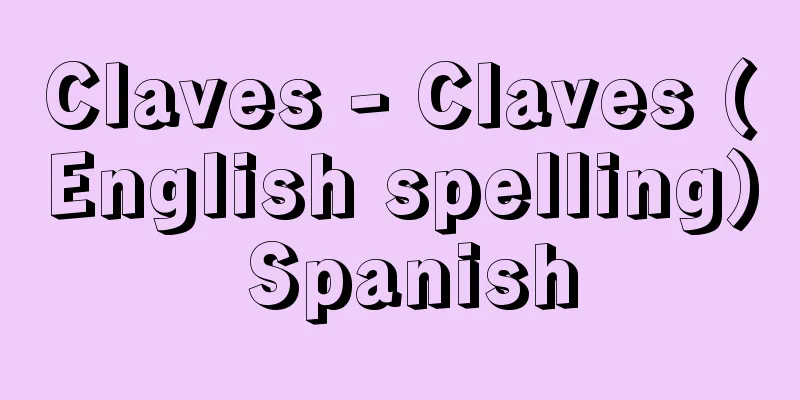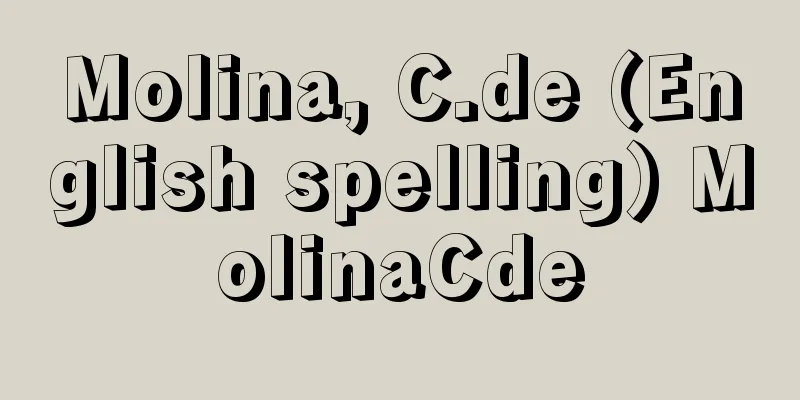Claves - Claves (English spelling) Spanish

|
A reciprocal percussion instrument of Cuban origin. A type of clapper. It consists of two hard, cylindrical wooden sticks, 20-25 cm long and about 3 cm in diameter. Certain rhythmic patterns of the claves are used repeatedly in Latin American dance rhythms, especially in rumba. To obtain a sharp, clear sound, one stick is held lightly between the fingers of the right hand and the other is placed on the cup-shaped palm of the left hand and tapped lightly. Originally an instrument used to accompany Latin American dance, it has also been incorporated into modern music, such as in the chamber music Ionización for ballet percussion and sirens, and in Copland's ballet Appalachian Spring. [Yoichi Yamada] Source: Shogakukan Encyclopedia Nipponica About Encyclopedia Nipponica Information | Legend |
|
キューバ起源の相互打奏体鳴楽器。拍子木の一種。長さ20~25センチメートル、直径約3センチメートルの2本の堅い円筒形の木の棒からなる。ラテンアメリカの舞踏リズム、とくにルンバにおいて、クラベスの一定のリズム音型が反復的に用いられる。鋭く澄んだ音を得るために、1本を右手の指で軽く持ち、左の手のひらを椀(わん)型に丸めた上にもう1本を置き、軽くたたく。元来ラテンアメリカの舞踏伴奏用楽器であるが、バレーズの打楽器群とサイレンによる室内楽曲『イオニザシオン』、コープランドのバレエ曲『アパラチアの春』など、近代音楽にも取り入れられている。 [山田陽一] 出典 小学館 日本大百科全書(ニッポニカ)日本大百科全書(ニッポニカ)について 情報 | 凡例 |
>>: Clapeyron (English spelling) Benoit Paul Emile Clapeyron
Recommend
Theory of instructional stages
…He explored the internal structure of human ment...
Mourning visit - mourning visit
...Visits for fires, floods, etc. are primarily i...
Ceratolobus
…About 500 species of rattan are found in tropica...
Trentino-Alto Adige (province)
A region in northeastern Italy. It has an area of ...
Chita Peninsula
A long, narrow peninsula jutting out from north t...
Casting - Imono (English spelling)
This refers to metal products (castings) made by ...
Climate zone
Zones with similar climates that surround the Ear...
Saint-Denis Abbey - Saint-Denis Abbey
A monastery in the northern suburbs of Paris. It w...
Milling machine - Furaisuban (English spelling) milling machine
A milling cutter is a machine tool that performs ...
Tonle Sap (Lake) (English spelling)
A large lake in central Cambodia. In Cambodian, it...
Perchloric Acid - Perchloric Acid
HClO 4 (100.46). It is obtained by adding concent...
Reiganji Temple
This is a Jodo sect temple located in Fukagawa Sh...
Kaneko Totodokegumo - Kaneko Totodokegumo
…A general term for spiders belonging to the Antr...
The Ten Juju Bibasharon
A Buddhist book with 17 volumes. It is said to ha...
Documentary Theatre - kirokuengeki (English: documentary theatre)
This type of theater began in Germany in the 1960s...








![Wisconsin [State] - Wisconsin](/upload/images/67caf8616b26e.webp)
